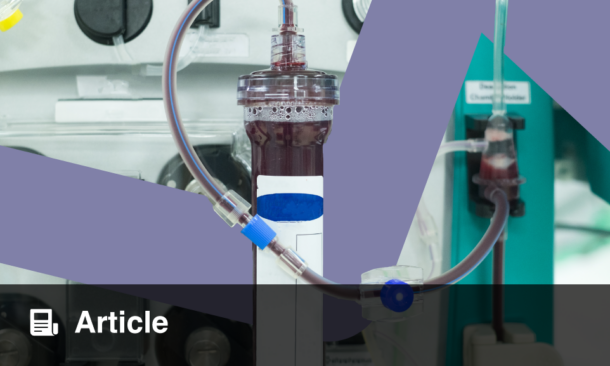BACKGROUND AND AIMS
Gadolinium-based contrast agents are widely used for MRI. Although they may be considered well-tolerated at recommended dosing levels, recent evidence supports the deposition of free gadolinium in the tissues and its slow release into circulation, resulting in long-term toxicity, which is aggravated in renal patients.1,2 The kidney, as the major excretion organ of these agents, and particularly the proximal tubule, is a common location of xenobiotics’ bioaccumulation;3,4 therefore, the kidneys may be key targets of gadolinium’s deleterious effects. This study aimed to unveil the nephrotoxic potential and the underlying mechanisms of toxicity of gadolinium, using an in vitro model of normal human adult proximal tubular cells (HK-2 cell line).
MATERIALS AND METHODS
HK-2 cells were exposed for 24 hours to a wide concentration range of ionic gadolinium in the form of trichloride hexahydrate, and cell viability was assessed to estimate the half-maximal effective concentration (EC50) and the sub-toxic concentration eliciting 1% of cell death (EC01). These ECs were further used to determine the concentration-dependent effects of gadolinium in this renal cell model: oxidative stress, mitochondrial (dys)function, cell death mechanisms, lipid deposition, and inflammatory response.
RESULTS
Gadolinium induced cell death in a concentration-dependent manner, with estimated EC01 and EC50 of 3 and 340 µM, respectively. When compared to control cells, the subtoxic concentration showed no significant effects in reactive oxygen and nitrogen species (ROS and RNS) production, total glutathione levels or total antioxidant status. On the other hand, the EC50 showed significant disruption of the oxidative status of the cell, with >60% depletion of total glutathione levels cell contents (p<0.01) and a significant decrease of total antioxidant status (p<0.05). However, this effect was not accompanied by an increase, but rather by a significant decline, in ROS and RNS production of about 50% below control (p<0.0001). At the EC50, but not at EC01, a disturbance of the mitochondrial and energetic homeostasis was also observed, as shown by the increment of intracellular free calcium levels, hyperpolarisation of the mitochondrial membrane, and decay of the ATP levels (p<0.0001). Cell death induced by gadolinium was characterised by typical morphological changes of both apoptosis and necrosis, with a significant increase in propidium iodide uptake and lactate dehydrogenase leakage (p≤0.0001) at EC50. The presence of neutral lipids-containing vesicles was observed in the cytoplasm of cells exposed to gadolinium, already noticeable at the sub-toxic concentration. Cells exposed to gadolinium also showed increased expression of the pro-inflammatory gene IL6, though this effect was only significant at the EC01 (p<0.05).
CONCLUSION
Gadolinium showed a marked cytotoxic potential at micromolar levels in HK-2 cells. This cytotoxicity was characterised by increased oxidative stress, independent of ROS and RNS production, and mitochondrial dysfunction followed by cell death via apoptosis and, ultimately, by necrosis. At a sub-toxic concentration, gadolinium was also able to elicit the accumulation of lipidic vesicles within the cells’ cytoplasm, and to trigger a pro-inflammatory response. Although it is still unclear which amount of gadolinium is in fact released from the complexes commonly used as contrast agents, this study shows that the gadolinium ion has direct nephrotoxic potential, with noteworthy impact at sub-toxic concentrations.








